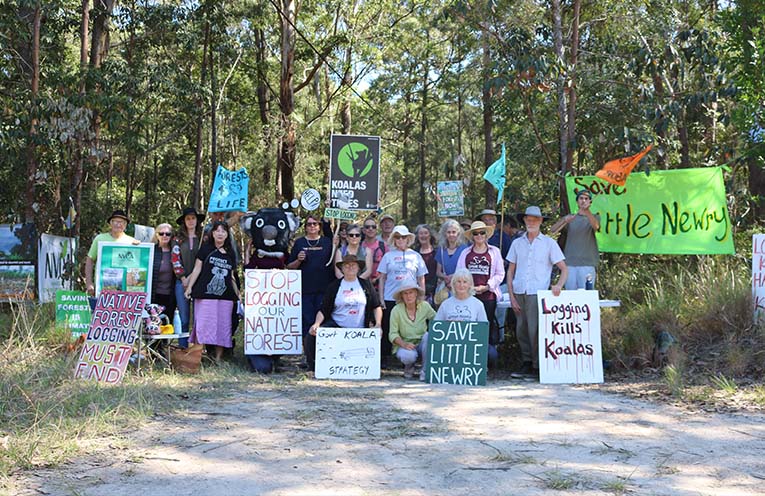
THE NAMBUCCA Valley Conservation Association has lodged an objection to scheduled logging in Little Newry State Forest (SF), claiming it is home to key koala habitat and that planning requirements have not been fulfilled.
Little Newry SF, located west of the Pacific Highway between Valla Beach and Urunga, is currently being assessed by the NSW Government as part of planning for the Great Koala National Park (GKNP).
 Advertise with News of The Area today.
Advertise with News of The Area today.It’s worth it for your business.
Message us.
Phone us – (02) 4981 8882.
Email us – media@newsofthearea.com.au
According to the Forestry Corporation of NSW (FCNSW) plan portal, logging operations in Little Newry (compartment 2) are planned to commence within six months.
Late last month, representatives of the Nambucca Valley Conservation Association (NVCA) wrote to senior figures in FCNSW, requesting that Little Newry be withdrawn from the logging schedule or paused until the State Government has finalised the boundaries of the GKNP.
In that letter, veteran forest campaigner Lyn Orrego claimed that surveys required under the Coastal Integrated Forestry Operations Approvals (CIFOA) – the rules that regulate forestry operations – had not been undertaken.
Due to the reported presence of Senna acclinis (Rainforest cassia) – an endangered flowering plant – at Hungry Head, within five kilometres from the boundary of the logging compartment, Ms Orrego says targeted floral surveys must be completed to meet CIFOA requirements.
These surveys, according to the CIFOA, should be conducted in “spring to summer” when the plant is flowering or fruiting.
According to a FCNSW ecology report, these surveys had not been completed as of 29 May.
In response, a Forestry Corporation spokesperson told News Of The Area, “Surveys for Senna Acclinis and other endangered floral species are undertaken by Forestry Corporation’s experienced ecologists, who conduct broad area habitat monitoring under the CIFOA.”
NVCA president Paula Flack, who is also the National Parks Association of NSW’s Great Koala National Park campaign coordinator, said most of the forest compartment slated for logging is “high quality koala habitat”.
“Even though, thanks to community pressure, koala hubs in native forest within the GKNP assessment are now temporarily protected from logging, it is not OK to destroy occupied koala habitat elsewhere, especially when that habitat is likely to form part of the GKNP,” she said.
The conservationists, alongside local landholders, are also concerned about the presence of former antimony mines within the state forest.
“Little Newry SF contains old antimony mining and tailing sites, which when disturbed by logging machinery will release arsenic into creeks,” said Ms Orrego.
“This poses a serious safety risk for forestry workers as well as a pollution risk for downstream private landholders relying on clean water for stock and domestic uses.”
A spokesperson for FCNSW said this part of Little Newry State Forest has been harvested “many times in the past, most recently in 2012”, with an “extensive planning process” undertaken each time.
“As part of the planning for upcoming operations in Little Newry State Forest, Forestry Corporation has searched for evidence of former mines or contamination from historic operations,” they said.
“The native forestry regulations have strict conditions to manage soil and water during forestry operations that were developed by expert scientific panels and these will be strictly adhered to.”
A spokesperson for the NSW Environment Protection Authority (EPA) told NOTA, “FCNSW plans these operations, including how past mine shafts or the past mine workings are avoided and protected during harvesting operations.
“The NSW Environment Protection Authority (EPA) will closely monitor compliance with the conditions of the CIFOA and potential impacts to surrounding ecosystems, soils and water.”
By Doug CONNOR